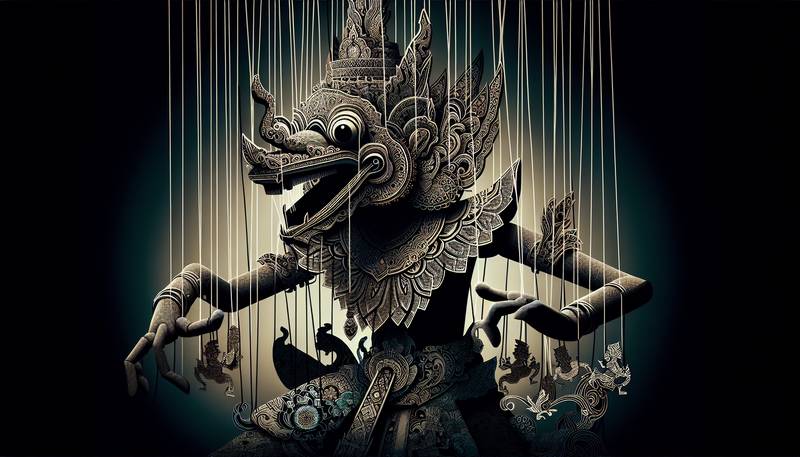Puppetry and Its Influence on Animation Design

The Puppeteering PhilosophyOh, the noble art of puppetry! To hold in one's hand the strings of life and death, to command the very essence of animation. The puppeteer is the unseen god of the stage, the puppet his divine manifestation. But how does this arcane craft translate to the world of animation design?To find the answer, one must peer into the dark and mysterious recesses of this ancient art form, where we find a treasure trove of inspiration for modern animation. Puppetry has long been a source of fascination and intrigue, from the shadows of the Indonesian Wayang Kulit to the mischievous antics of the marionettes in European theatre. And it's no wonder why - to take an inanimate object and breathe life into it is a skill bordering on sorcery.The Puppet Master's Secret: Shared PrinciplesSo what can the humble animator learn from the puppet master? For one, the principles of good puppetry can often be applied to the world of animation. Both arts involve the manipulation of a character to convey emotion, tell a story, or simply entertain an audience. The secrets of the puppeteer's craft, therefore, can be of great value to the aspiring animator.One such principle is that of 'weight'. A good puppeteer knows that by making their puppet appear heavy or light, they can create a sense of realism that draws the audience in. The same is true for animation - by paying close attention to how their characters interact with the world around them, animators can create a believable and immersive experience.Another shared principle is that of exaggeration. Both puppetry and animation deal in the realm of the fantastical, and as such, a certain degree of exaggeration is often necessary to convey emotion and expression. A puppet's movements may be larger-than-life, but this serves to enhance the overall performance. An animator, too, can benefit from a healthy dose of hyperbole in their work.Techniques Translated: Stop Motion AnimationBut it's not just the principles of puppetry that have influenced animation design. The techniques themselves have also played a significant role - and nowhere is this more apparent than in the world of stop motion animation.Stop motion is, in essence, puppetry in miniature. The animator, like the puppeteer, manipulates their characters in order to create the illusion of life. But instead of pulling strings, the stop motion artist moves their puppets incrementally, capturing each small movement on film. The result is a kind of magical realism, where the inanimate becomes animate before our very eyes.And the influence of puppetry on stop motion animation is evident in some of the most iconic films of the genre. From the dreamlike worlds of Jan Švankmajer to the macabre creations of Tim Burton, the spirit of puppetry is alive and well in these animated masterpieces.Computer Animation: The Digital PuppeteerBut what of computer animation? Surely this high-tech medium has no place for the antiquated art of puppetry? Ah, but there's the rub - for even in the realm of ones and zeroes, the puppeteer's influence can be felt.Consider, for a moment, the concept of the 'digital puppet'. In computer animation, characters are often controlled by a system of bones and joints, not unlike the skeletons used in traditional marionettes. The animator then manipulates these bones, much as a puppeteer would, to create the desired movement and expression.Even more striking is the emergence of 'performance capture' technology, where an actor's movements are recorded and translated into the digital world. In this sense, the actor becomes a kind of living puppet, with the animator as their puppet master. The result is an uncanny merging of the human and the digital, a testament to the enduring influence of puppetry on animation design.A Marriage of Arts: Embracing the Puppeteer's LegacySo, as we can see, the worlds of puppetry and animation are inextricably linked. From shared principles to technical innovations, the puppeteer's influence can be found throughout the history of animation design. But what can we learn from this marriage of arts?For one, it serves as a reminder that sometimes the old ways are the best. In an age of digital wizardry, it's easy to become disconnected from the tangible, physical world of the puppeteer. But by embracing the wisdom of this ancient craft, animators can create truly immersive and engaging experiences.- Never underestimate the power of weight and exaggeration in conveying emotion and expression.
- Look to the techniques of puppetry for innovative approaches to animation design.
- Remember that, at its core, animation is about creating the illusion of life - and who better to learn from than the master of this illusion, the puppeteer?
So go forth, intrepid animators, and boldly weave the secrets of the puppeteer into your digital tapestry. And in doing so, may you breathe new life into the world of animation design.
|
|







